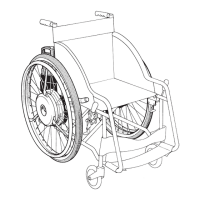Why Yamaha Wheelchair does not start or stops?
- AAnna JenkinsNov 3, 2025
Your Yamaha Wheelchair might not start or may stop due to several reasons: * The clutch levers may be in the manual drive position. If this is the case, shift the clutch levers to the power drive position. * The battery may have run down. Try charging the battery. If the battery is not the issue, contact your dealer. * If you are using a lithium ion battery and operating the wheelchair in extreme temperatures, switch to manual operation. * The battery may not be properly inserted. Ensure the battery is correctly inserted. * If the assistant controller is on while the rider is operating, turn off both controllers and turn on the rider's controller. Conversely, if the controller is on while the assistant is operating, turn off both and turn on the assistant controller. * If you'...


